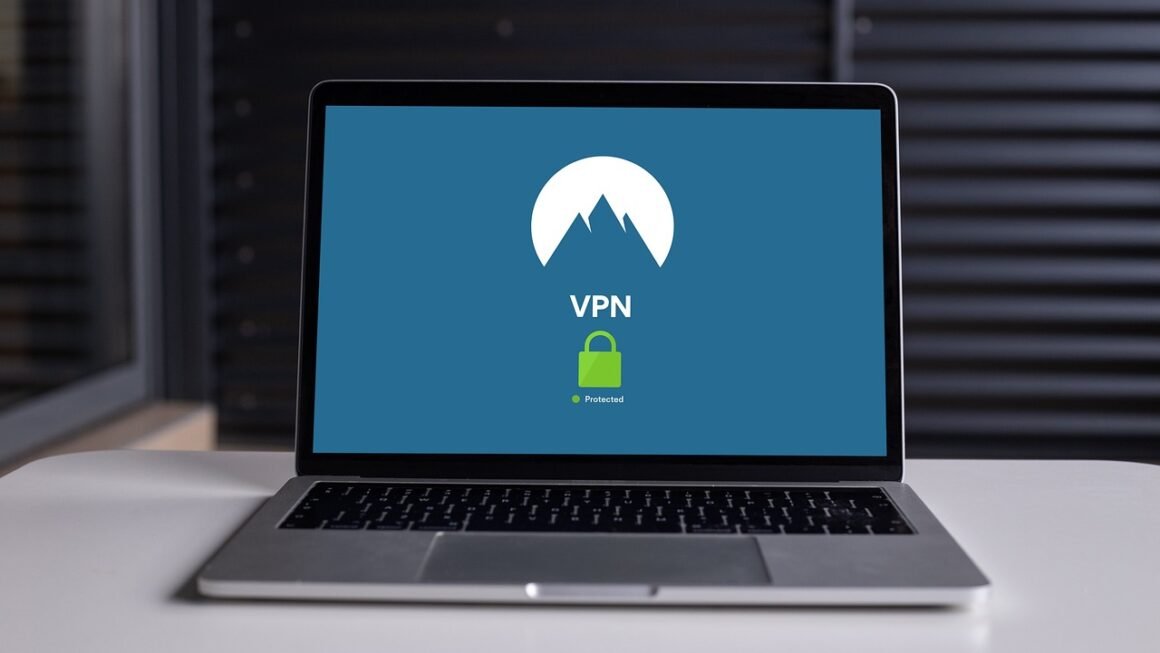Cloud security is no longer a futuristic concept but a present-day necessity for businesses of all sizes. As organizations increasingly migrate their data and applications to the cloud, understanding and implementing robust cloud security measures becomes paramount. Ignoring this can lead to devastating consequences, including data breaches, financial losses, and reputational damage. This blog post provides a comprehensive overview of cloud security, exploring its key aspects, challenges, and best practices.
Understanding Cloud Security
What is Cloud Security?
Cloud security encompasses the technologies, policies, controls, and services that protect cloud-based data, applications, and infrastructure. It’s about establishing a secure environment within the cloud ecosystem, mitigating risks, and ensuring data confidentiality, integrity, and availability. Unlike traditional on-premises security, cloud security requires a shared responsibility model, where both the cloud provider and the customer share the responsibility for securing the environment.
- Confidentiality: Ensuring that sensitive data is only accessible to authorized users and systems.
- Integrity: Maintaining the accuracy and completeness of data, preventing unauthorized modifications.
- Availability: Guaranteeing that data and applications are accessible to authorized users when needed.
The Shared Responsibility Model
The shared responsibility model is a cornerstone of cloud security. The cloud provider is typically responsible for the security of the cloud (the underlying infrastructure, hardware, and software), while the customer is responsible for the security in the cloud (the data, applications, identities, and operating systems they deploy). For example, AWS is responsible for securing the physical data centers, while the customer is responsible for configuring their EC2 instances securely, including patching the OS and managing user access.
- Provider Responsibilities: Physical security, network infrastructure, virtualization infrastructure, data center security.
- Customer Responsibilities: Data encryption, access management, application security, compliance.
Types of Cloud Deployment Models and Security Implications
Different cloud deployment models (public, private, hybrid, multi-cloud) present unique security challenges. Each model requires a tailored security approach.
- Public Cloud: Shared infrastructure managed by the cloud provider. Offers scalability and cost-effectiveness but can raise concerns about data isolation and control. Example: AWS, Azure, Google Cloud Platform.
- Private Cloud: Dedicated infrastructure managed by the organization or a third party. Offers greater control and security but can be more expensive. Often used for sensitive data or regulatory compliance.
- Hybrid Cloud: A combination of public and private clouds, allowing organizations to leverage the benefits of both. Requires careful orchestration and consistent security policies across environments.
- Multi-Cloud: Using multiple public cloud providers. Offers redundancy and avoids vendor lock-in, but can complicate security management.
Key Cloud Security Challenges
Data Breaches and Data Loss
Data breaches are a significant concern in the cloud. Misconfigured cloud storage, weak passwords, and vulnerabilities in cloud applications can all lead to data breaches. Data loss can occur due to accidental deletion, malicious attacks, or hardware failures. According to the 2023 Cost of a Data Breach Report, the average cost of a data breach is $4.45 million globally.
- Example: A misconfigured AWS S3 bucket allowing unauthorized access to sensitive customer data.
- Mitigation: Implement strong access controls, encrypt data at rest and in transit, regularly monitor cloud environments for misconfigurations, and implement data loss prevention (DLP) tools.
Identity and Access Management (IAM)
Proper IAM is crucial for controlling who has access to cloud resources and data. Weak passwords, lack of multi-factor authentication (MFA), and overly permissive permissions can lead to unauthorized access and data breaches.
- Example: An employee with compromised credentials gaining access to a cloud database and exfiltrating sensitive information.
- Mitigation: Enforce strong password policies, implement MFA, follow the principle of least privilege (grant users only the minimum permissions they need), and regularly review user access rights.
Compliance and Regulatory Requirements
Organizations must comply with various regulations (e.g., GDPR, HIPAA, PCI DSS) when storing and processing data in the cloud. Failure to comply can result in hefty fines and legal penalties. Demonstrating compliance in the cloud can be complex.
- Example: A healthcare provider storing patient data in the cloud without proper HIPAA compliance measures.
- Mitigation: Understand the relevant regulations, implement appropriate security controls, conduct regular audits, and use cloud services that are certified for compliance.
Misconfigurations
Cloud misconfigurations are a leading cause of cloud security incidents. Simple errors, such as leaving default settings unchanged or failing to properly configure security groups, can create vulnerabilities that attackers can exploit.
- Example: An improperly configured security group allowing unrestricted access to a database server.
- Mitigation: Use infrastructure-as-code (IaC) to automate configuration management, implement automated configuration checks, regularly audit cloud configurations, and train staff on secure cloud configuration practices.
Cloud Security Best Practices
Implement Strong Identity and Access Management (IAM)
IAM is your first line of defense in the cloud. Properly configuring IAM significantly reduces the risk of unauthorized access and data breaches.
- Principle of Least Privilege: Grant users only the minimum permissions they need to perform their job functions.
- Multi-Factor Authentication (MFA): Require users to provide multiple forms of authentication (e.g., password and code from a mobile app) to verify their identity.
- Role-Based Access Control (RBAC): Assign permissions based on roles rather than individual users to simplify management.
- Regular Access Reviews: Periodically review user access rights to ensure they are still appropriate.
Encrypt Data at Rest and in Transit
Encryption protects data from unauthorized access, even if a breach occurs. Encrypting data both at rest (when it’s stored) and in transit (when it’s being transmitted) provides comprehensive protection.
- Data at Rest: Encrypt data stored in cloud storage services, databases, and virtual machines. Use encryption keys managed by the cloud provider or manage your own keys using a key management service (KMS).
- Data in Transit: Use TLS/SSL encryption for all network traffic between cloud services and clients. Enforce HTTPS for all web applications.
Implement Network Security Controls
Network security controls help to isolate cloud resources, prevent unauthorized access, and protect against network-based attacks.
- Virtual Private Clouds (VPCs): Create isolated networks within the cloud to separate resources and control network traffic.
- Security Groups/Network Security Groups (NSGs): Use firewall rules to control inbound and outbound traffic to cloud resources.
- Web Application Firewalls (WAFs): Protect web applications from common web attacks, such as SQL injection and cross-site scripting (XSS).
- Intrusion Detection/Prevention Systems (IDS/IPS): Monitor network traffic for malicious activity and automatically block or mitigate attacks.
Regularly Monitor and Audit Cloud Environments
Continuous monitoring and auditing are essential for detecting and responding to security incidents in a timely manner.
- Log Management: Collect and analyze logs from cloud services, applications, and operating systems to identify suspicious activity.
- Security Information and Event Management (SIEM): Use a SIEM system to aggregate and correlate security data from multiple sources, enabling faster detection and response to incidents.
- Vulnerability Scanning: Regularly scan cloud resources for vulnerabilities and misconfigurations.
- Penetration Testing: Conduct periodic penetration testing to identify weaknesses in cloud security controls.
Choosing the Right Cloud Security Tools
Cloud-Native Security Tools
Cloud providers offer a range of native security tools designed to protect their cloud environments. These tools are often tightly integrated with the cloud platform and can provide comprehensive security coverage.
- AWS: AWS Security Hub, AWS GuardDuty, AWS CloudTrail, AWS Config.
- Azure: Azure Security Center, Azure Sentinel, Azure Defender, Azure Policy.
- GCP: Google Cloud Security Command Center, Google Cloud Armor, Google Cloud Audit Logs, Google Cloud Security Scanner.
Third-Party Security Tools
Numerous third-party security vendors offer tools that can complement or enhance cloud-native security capabilities. These tools often provide advanced features, such as threat intelligence, vulnerability management, and compliance automation.
- Examples: Palo Alto Networks Prisma Cloud, CrowdStrike Falcon, Trend Micro Cloud One, Fortinet FortiGate.
Considerations When Choosing Security Tools
- Integration: Ensure that the tools integrate seamlessly with your cloud environment and existing security infrastructure.
- Coverage: Select tools that provide comprehensive security coverage for your specific cloud workloads and requirements.
- Scalability: Choose tools that can scale to meet your growing cloud needs.
- Automation: Look for tools that automate security tasks, such as vulnerability scanning, compliance checks, and incident response.
- Cost: Consider the total cost of ownership, including licensing fees, implementation costs, and ongoing maintenance.
Conclusion
Cloud security is a shared responsibility that requires a comprehensive and proactive approach. By understanding the key challenges, implementing best practices, and leveraging the right security tools, organizations can effectively protect their data and applications in the cloud. Prioritizing IAM, encryption, network security, and continuous monitoring will strengthen your security posture and reduce the risk of costly breaches and data loss. Remember to regularly review and update your cloud security strategy as your organization’s needs and the threat landscape evolve. The journey to cloud security maturity is ongoing but essential for success in today’s digital landscape.



